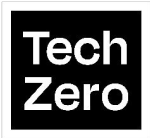A Life Cycle Assessment (LCA) is a cornerstone of sustainability measurement, assessing environmental impacts throughout a product’s life cycle. Navigating the various LCA standards can be confusing, but understanding them is crucial for making informed decisions about your LCA practices. This blog post gives you a clear overview of the most prominent standards and guidelines like ISO 14040/14044, ISO 14067, PEF, PACT, etc., empowering you to choose the right approach for your needs.
Key LCA Standards
ISO 14040 & ISO 14044: The Foundation of LCA
These international standards are the foundation of LCA, outlining the framework and requirements for conducting a comprehensive LCA study, following a product’s environmental impact from “cradle to grave.” ISO 14040:2006 describes the principles and framework for LCA, while ISO 14044:2006 specifies requirements and provides guidelines for conducting an LCA study.
ISO 14067: Carbon Footprinting of Products
ISO 14067:2018 focuses specifically on carbon footprinting, providing guidelines for quantifying and reporting a product’s impact on climate change. It complements ISO 14044 but focuses on greenhouse gas emissions (GHG) and is aligned with the ISO 14040/44 LCA standards.
ISO 14020 – ISO 14026: Environmental Labels and Declarations
These standards establish principles and requirements for creating and using environmental labels and declarations to communicate footprint information effectively. They are essential for ensuring consumers are not misled by unsubstantiated environmental claims.
PAS 2050: Carbon Footprint Quantification
Similar to ISO 14067, PAS 2050 is a recognized standard for quantifying the carbon footprint of products and services. Developed by the British Standards Institution (BSI), it offers a comprehensive method for assessing life cycle greenhouse gas emissions. PAS 2050 provides a foundation for businesses to measure their environmental impact and identify opportunities for carbon neutrality. It outlines rules for assessment, covers sector-specific considerations, and aligns with the GHG Protocol Product Standard, ensuring consistency in carbon footprint quantification.
GHG Protocol
GHG Protocol has created standardized frameworks to measure and manage GHG emissions covering a variety of use cases – from corporations, cities, value chains to products. Its Product Standard is used to understand full life cycle GHG emissions of a product. It builds on the ISO 14040:2006, 14044:2006 and PAS 2050 standards with intent of providing additional specifications and guidance. It focusses only on the climate change impact category.
LCA Standards for Specific Applications
PEF (Product Environmental Footprint)
Developed by the European Commission, the Product Environmental Footprint (PEF) method, is also based on ISO standards for life cycle assessment (LCA). It provides a standardized approach that ensures consistency and facilitates product comparisons. To enable this, it defines Product Environmental Footprint Category Rules (PEFCR) to improve the reproducibility, comparability, and verifiability of results for specific product groups or sectors. PEF helps businesses comply with EU regulations and enables consumers to make informed choices based on standardized environmental product information.
PACT Pathfinder Framework
Pathfinder Framework developed by WBCSD PACT aims to address challenges in Scope3 accounting by introducing standardized approaches and guidelines across both methodology and technology. On methodology side, it had guidelines on builds convergence and harmonization on top the GHG protocol and other standards. For instance, the methodology specifies hierarchy for the applications of product category rules (PCRs). On the technology side, to facilitate data exchange across companies and value chains, it has guidelines and technical specifications.
Catena-X
The Catena-X Product Carbon Footprint (PCF) Rulebook is a guideline for Life Cycle Assessments in the automotive industry. Based on ISO standards, it standardizes CO2 emission measurements across the automotive supply chain. The rulebook provides sector-specific rules, addresses data quality, and aligns with global sustainability initiatives. By integrating with the International Material Data System, it’s set to become a crucial tool for consistent carbon footprint reporting. As a living document, it adapts to evolving best practices, driving transparency and comparability in automotive sustainability efforts.
Together for Sustainability (TfS)
The Together for Sustainability (TfS) PCF guideline is a standardized approach for calculating product carbon footprints in the chemical industry. Also based on ISO standards, it provides industry-specific guidance on allocation methods and calculation steps for chemical processes. TfS aims to harmonize sustainability assessments across the chemical supply chain, enabling integration into Scope 3 emissions reporting. The guideline includes verification requirements and mandatory reporting elements, with plans to expand data reporting requirements from 2025 onward.
Summary
Life Cycle Assessment is the cornerstone of sustainability, but implementing its various standards can be confusing. By understanding these standards, businesses can navigate the landscape of sustainability measurement with confidence, ensuring informed decision-making and adherence to industry best practices.
From the foundational ISO standards, ISO 14040/14044 that outline LCA principles to specialized frameworks like PEF tailored for specific applications, each standard serves a unique purpose in assessing environmental impacts. Additionally, standards like PAS 2050 and ISO 14020 – ISO 14026 play a crucial role in preventing greenwashing and ensuring transparent communication of environmental footprint information.
As Consumer Packaged Goods businesses strive for sustainability, adherence to these standards fosters credibility, facilitates product comparisons, and ultimately drives progress towards a greener future.
Take the Next Step: Contact us today to learn how Carbonbright can help you navigate LCA standards and enhance your sustainability efforts.
